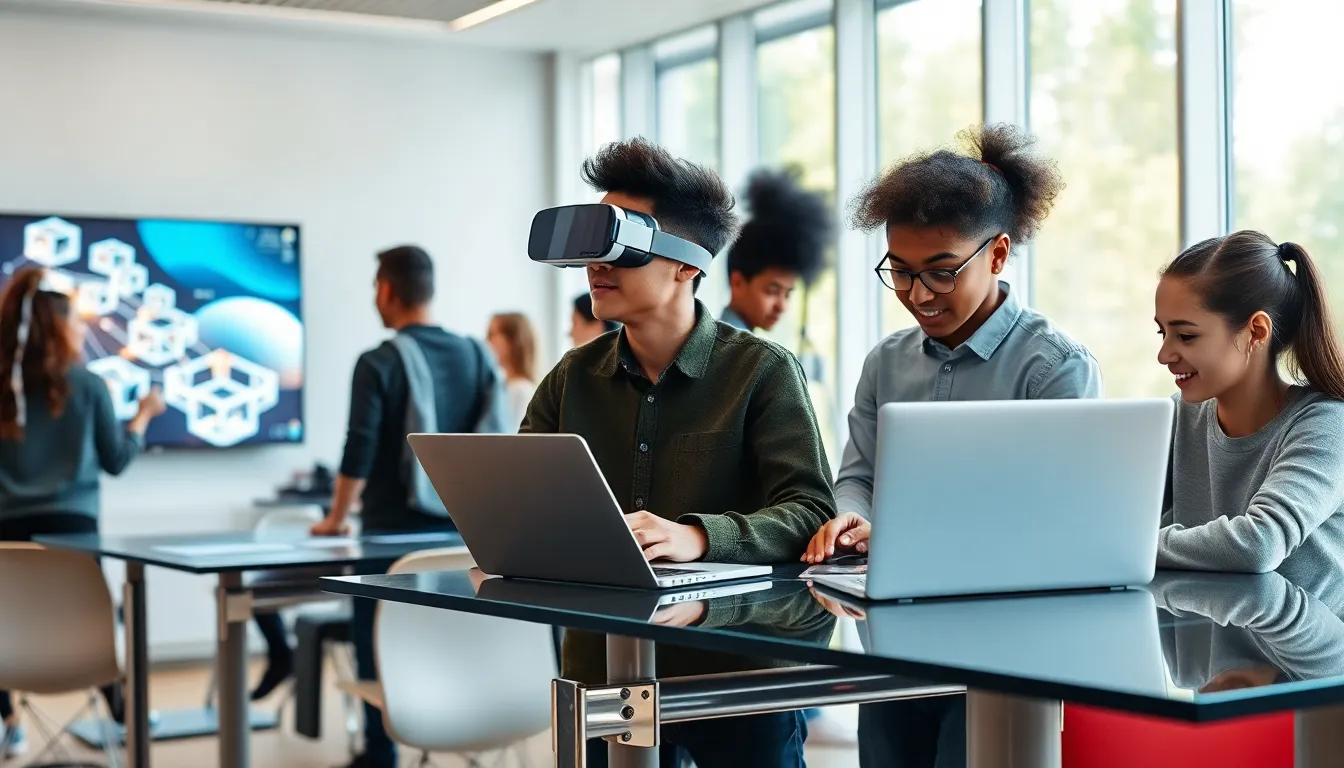Picture this: You walk into a classroom where the students aren’t just staring at the teacher but are engaging actively with holograms, VR environments, and personalized learning apps. This isn’t a scene out of a sci-fi movie: it’s the reality shaped by emerging learning technologies. In today’s rapidly evolving educational landscape, technology is not just a tool but a transformative force redefining how we acquire knowledge. From interactive simulations to AI-driven platforms, these tools promise to make learning more engaging, efficient, and tailored to individual needs. So, buckle up as we explore the intriguing realm of emerging learning technologies.
Table of Contents
ToggleOverview of Emerging Learning Technologies

The field of education is undergoing a seismic shift thanks to emerging learning technologies. These innovations are not merely enhancements: they seek to revolutionize learning experiences across various platforms. At the core, we find technologies like artificial intelligence, virtual reality, augmented reality, and gamification, each playing a critical role in reshaping engagement and understanding. AI algorithms personalize learning paths, VR environments immerse students in real-world scenarios, and gamified elements make learning fun. The global education sector is witnessing a significant boom as institutions adopt these technologies to cater to diverse learning needs and styles. In essence, emerging learning technologies are becoming the bedrock of modern pedagogy.
Benefits of Using Emerging Learning Technologies
Using emerging learning technologies offers a myriad of benefits, making educational experiences more impactful and enjoyable. Firstly, these tools cater to various learning styles, which is crucial in a classroom where students have different preferences. Visual learners benefit from interactive simulations, while auditory learners thrive on podcasts and videos. Also, technology fosters engagement. Imagine students actively participating through interactive quizzes or VR simulations instead of passively taking notes. This leads to better retention of information, turning tedious study hours into immersive experiences. Also, emerging technologies often provide real-time feedback, enabling students to recognize their strengths and weaknesses instantly. This feature fosters a growth mindset, as learners can continuously improve based on constructive insights. Another pivotal advantage is accessibility: technology breaks geographical barriers, allowing students from remote areas to access high-quality learning resources.
Key Categories of Emerging Learning Technologies
Understanding the landscape of emerging learning technologies can seem daunting, but it typically falls into a few key categories.
Artificial Intelligence (AI)
AI is revolutionizing the educational process by offering personalized learning experiences. Adaptive learning platforms use algorithms that analyze student performance, tailoring content to meet individual needs.
Virtual and Augmented Reality (VR/AR)
These immersive technologies allow students to enter simulations that enhance understanding. For example, a biology student can explore the human body’s anatomy at a microscopic level in a VR setting, something a textbook simply can’t provide.
Learning Management Systems (LMS)
These centralized platforms help course management and content delivery. LMS solutions streamline communication between instructors and students, frequently incorporating features that support interactive learning.
Gamification
Adding game-like elements to learning can significantly increase motivation. Points, badges, and leaderboards turn everyday lessons into competitive and engaging activities.
Mobile Learning (m-Learning)
In an era where smartphones are ubiquitous, m-learning has surfaced as a flexible way to access educational materials anytime, anywhere. It caters to the on-the-go lifestyle of contemporary learners.
Real-World Applications of Emerging Learning Technologies
The applications of emerging learning technologies are as diverse as they are impactful. In corporate training, for instance, companies use VR to simulate high-stakes scenarios, enabling employees to practice skills in a safe environment. Healthcare education has seen a massive benefit from VR training, where medical students can engage in complex procedures without the need for a live patient.
In K-12 education, interactive platforms and gamified lessons have proven particularly effective in subjects like math and science. Learning through play encourages curiosity while providing immediate feedback and rewards.
Higher education institutions have started incorporating AI for administrative tasks, freeing up faculty time for more personalized student interaction. Besides, massive open online courses (MOOCs) use sophisticated analytics to offer personalized experiences for thousands of students worldwide.
The integration of these technologies shows not only their flexibility but also their potential to enhance learning outcomes significantly.
Challenges and Considerations
While the advantages of emerging learning technologies are compelling, they also bring unique challenges that must be addressed. One major concern is the digital divide: not all students have equal access to technology, which can create disparities. Educators must also be wary of over-reliance on technology, ensuring that traditional teaching methods are not entirely replaced.
Also, teachers need proper training to carry out these technologies effectively. Without adequate professional development, even the best tools can fall flat. There are also concerns about data privacy, as many educational technologies collect user data, raising questions about security and ethical use.
Finally, while gamification and immersive learning are fantastic engagement tools, they could potentially distract from essential curriculum content if not balanced properly.
The Future of Learning Technologies
Looking ahead, the future of learning technologies appears bright and full of promise. As technology continues to evolve, we can expect even more innovative solutions to enhance learning experiences. AI is likely to become more sophisticated, enabling even richer personalized learning experiences tailored to individual learning paces and styles.
Also, advancements in VR and AR technology will likely make immersive learning experiences more accessible and affordable, expanding their reach to various educational settings. We can also anticipate an increased presence of blended learning environments that combine online and face-to-face learning, providing even greater flexibility and customization.
The continued rise of data analytics will empower educators with actionable insights into learning behaviors, allowing for timely interventions and improvements. In essence, the future is not just about technological advancements but about creating an ecosystem where learning is more inclusive and engaging for everyone.



